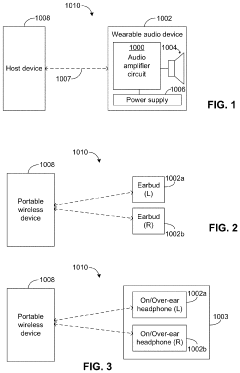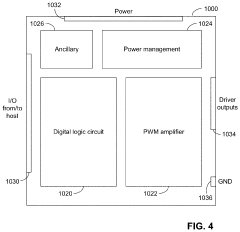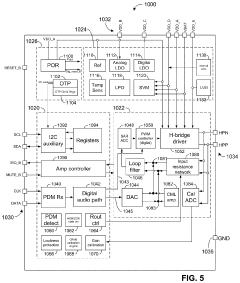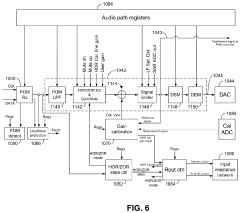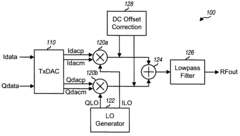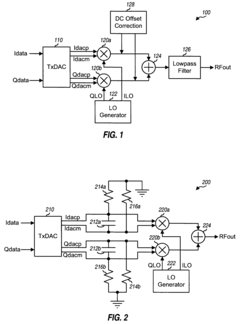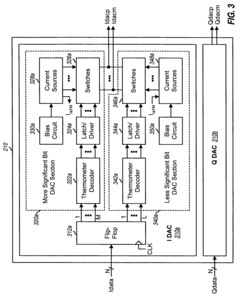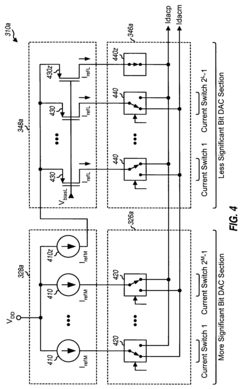Uncovering LDAC Innovations in Wireless Headphone Manufactures
JUL 4, 20259 MIN READ
Generate Your Research Report Instantly with AI Agent
Patsnap Eureka helps you evaluate technical feasibility & market potential.
LDAC Technology Evolution and Objectives
LDAC, developed by Sony in 2015, represents a significant milestone in the evolution of wireless audio technology. This high-resolution audio codec aims to deliver near-lossless audio quality over Bluetooth connections, addressing the longstanding challenge of transmitting high-fidelity sound wirelessly. The technology's primary objective is to bridge the gap between wired and wireless audio performance, offering audiophiles and casual listeners alike an enhanced listening experience without compromising on convenience.
The development of LDAC is rooted in the growing demand for high-quality audio in an increasingly wireless world. As consumer preferences shifted towards wireless headphones and speakers, the limitations of existing Bluetooth codecs became apparent. Standard codecs like SBC (Sub-Band Coding) and even more advanced ones like aptX were unable to transmit the full spectrum of high-resolution audio files, resulting in a noticeable loss of audio fidelity.
LDAC's evolution can be traced through several key stages. Initially, it focused on increasing data transfer rates, achieving up to 990 kbps compared to SBC's maximum of 328 kbps. This significant boost in bandwidth allowed for the transmission of 24-bit/96 kHz audio files, a substantial improvement over previous Bluetooth audio capabilities. Subsequent iterations of LDAC have focused on optimizing power consumption and improving connection stability, addressing two critical factors in wireless headphone performance.
The technology's objectives extend beyond mere audio quality improvements. LDAC aims to establish a new standard in wireless audio transmission, encouraging wider adoption of high-resolution audio formats and driving innovation in the headphone industry. By demonstrating that high-fidelity audio can be achieved wirelessly, LDAC challenges manufacturers to elevate their product offerings and pushes the boundaries of what consumers expect from wireless audio devices.
Furthermore, LDAC's development reflects a broader trend in the audio industry towards preserving the integrity of original recordings. As music production and mastering techniques have advanced, there's been a growing emphasis on capturing and reproducing audio with greater detail and dynamic range. LDAC's ability to transmit this high-quality audio wirelessly aligns with this industry-wide push for audio fidelity, potentially influencing future music production and distribution methods.
Looking ahead, the continued evolution of LDAC technology is likely to focus on further reducing latency, improving energy efficiency, and expanding compatibility across a wider range of devices and platforms. These advancements will be crucial in maintaining LDAC's relevance in an increasingly competitive wireless audio landscape, where new codecs and technologies are constantly emerging.
The development of LDAC is rooted in the growing demand for high-quality audio in an increasingly wireless world. As consumer preferences shifted towards wireless headphones and speakers, the limitations of existing Bluetooth codecs became apparent. Standard codecs like SBC (Sub-Band Coding) and even more advanced ones like aptX were unable to transmit the full spectrum of high-resolution audio files, resulting in a noticeable loss of audio fidelity.
LDAC's evolution can be traced through several key stages. Initially, it focused on increasing data transfer rates, achieving up to 990 kbps compared to SBC's maximum of 328 kbps. This significant boost in bandwidth allowed for the transmission of 24-bit/96 kHz audio files, a substantial improvement over previous Bluetooth audio capabilities. Subsequent iterations of LDAC have focused on optimizing power consumption and improving connection stability, addressing two critical factors in wireless headphone performance.
The technology's objectives extend beyond mere audio quality improvements. LDAC aims to establish a new standard in wireless audio transmission, encouraging wider adoption of high-resolution audio formats and driving innovation in the headphone industry. By demonstrating that high-fidelity audio can be achieved wirelessly, LDAC challenges manufacturers to elevate their product offerings and pushes the boundaries of what consumers expect from wireless audio devices.
Furthermore, LDAC's development reflects a broader trend in the audio industry towards preserving the integrity of original recordings. As music production and mastering techniques have advanced, there's been a growing emphasis on capturing and reproducing audio with greater detail and dynamic range. LDAC's ability to transmit this high-quality audio wirelessly aligns with this industry-wide push for audio fidelity, potentially influencing future music production and distribution methods.
Looking ahead, the continued evolution of LDAC technology is likely to focus on further reducing latency, improving energy efficiency, and expanding compatibility across a wider range of devices and platforms. These advancements will be crucial in maintaining LDAC's relevance in an increasingly competitive wireless audio landscape, where new codecs and technologies are constantly emerging.
Market Demand for High-Quality Wireless Audio
The demand for high-quality wireless audio has been steadily increasing in recent years, driven by the growing popularity of wireless headphones and earbuds. This trend is fueled by several factors, including the widespread adoption of smartphones, the elimination of headphone jacks in many mobile devices, and the increasing consumer preference for convenience and portability in audio products.
The global wireless headphone market has experienced significant growth, with a compound annual growth rate (CAGR) of over 20% in the past five years. This growth is expected to continue, with projections indicating that the market will reach a value of tens of billions of dollars by 2025. The demand for premium wireless audio products, which offer superior sound quality and advanced features, has been particularly strong.
Consumer expectations for wireless audio quality have risen dramatically. Users now demand audio performance that matches or exceeds that of wired headphones, without compromising on the convenience of wireless connectivity. This has led to a surge in interest for high-resolution audio codecs like LDAC, which can transmit audio at bitrates up to 990 kbps, significantly higher than standard Bluetooth codecs.
The market for LDAC-enabled devices has shown robust growth, with an increasing number of smartphone manufacturers and audio equipment producers adopting this technology. Major players in the audio industry have recognized the importance of high-quality wireless audio and have been investing heavily in research and development to improve their offerings.
Another key driver of market demand is the rise of music streaming services that offer high-resolution audio options. As more consumers subscribe to these services and become accustomed to higher audio quality, the demand for wireless headphones capable of reproducing this fidelity has increased correspondingly.
The professional and prosumer segments have also contributed to the growing demand for high-quality wireless audio. Musicians, audio engineers, and content creators require wireless solutions that can deliver studio-quality sound without latency issues, further pushing the boundaries of wireless audio technology.
In response to these market trends, manufacturers have been focusing on developing wireless headphones with advanced features such as active noise cancellation, extended battery life, and improved connectivity. The integration of LDAC technology has become a key differentiator for premium products, allowing brands to cater to audiophiles and discerning consumers who prioritize sound quality.
The global wireless headphone market has experienced significant growth, with a compound annual growth rate (CAGR) of over 20% in the past five years. This growth is expected to continue, with projections indicating that the market will reach a value of tens of billions of dollars by 2025. The demand for premium wireless audio products, which offer superior sound quality and advanced features, has been particularly strong.
Consumer expectations for wireless audio quality have risen dramatically. Users now demand audio performance that matches or exceeds that of wired headphones, without compromising on the convenience of wireless connectivity. This has led to a surge in interest for high-resolution audio codecs like LDAC, which can transmit audio at bitrates up to 990 kbps, significantly higher than standard Bluetooth codecs.
The market for LDAC-enabled devices has shown robust growth, with an increasing number of smartphone manufacturers and audio equipment producers adopting this technology. Major players in the audio industry have recognized the importance of high-quality wireless audio and have been investing heavily in research and development to improve their offerings.
Another key driver of market demand is the rise of music streaming services that offer high-resolution audio options. As more consumers subscribe to these services and become accustomed to higher audio quality, the demand for wireless headphones capable of reproducing this fidelity has increased correspondingly.
The professional and prosumer segments have also contributed to the growing demand for high-quality wireless audio. Musicians, audio engineers, and content creators require wireless solutions that can deliver studio-quality sound without latency issues, further pushing the boundaries of wireless audio technology.
In response to these market trends, manufacturers have been focusing on developing wireless headphones with advanced features such as active noise cancellation, extended battery life, and improved connectivity. The integration of LDAC technology has become a key differentiator for premium products, allowing brands to cater to audiophiles and discerning consumers who prioritize sound quality.
LDAC Technical Challenges and Limitations
LDAC, developed by Sony, represents a significant advancement in wireless audio technology. However, it faces several technical challenges and limitations that impact its widespread adoption and performance in wireless headphone manufacturing.
One of the primary challenges is the high bandwidth requirement. LDAC operates at up to 990 kbps, which is substantially higher than other Bluetooth codecs. This high data rate can lead to increased power consumption and reduced battery life in wireless headphones, a critical consideration for manufacturers and consumers alike.
Compatibility issues also pose a significant hurdle. While LDAC is now part of the Android Open Source Project (AOSP), it is not universally supported across all devices. This limited compatibility restricts the market reach for LDAC-enabled headphones and complicates the manufacturing process, as companies must consider producing multiple variants to cater to different markets and devices.
The complexity of implementing LDAC in wireless headphones presents another challenge. The codec requires sophisticated hardware and software integration, which can increase production costs and potentially lead to higher retail prices. This complexity also extends to the design phase, where manufacturers must balance audio quality with other features and form factors.
Latency is another area where LDAC faces limitations. While it offers superior audio quality, the high-bitrate transmission can introduce noticeable delays, particularly problematic for gaming or video applications. Manufacturers must implement additional technologies or optimizations to mitigate this latency, adding another layer of complexity to the design process.
Signal stability and range present ongoing challenges for LDAC implementation. The high-bandwidth nature of the codec makes it more susceptible to interference and signal degradation over distance. This can result in dropouts or quality reduction in real-world usage scenarios, requiring manufacturers to invest in robust antenna designs and signal processing technologies.
Lastly, the proprietary nature of LDAC, despite its inclusion in AOSP, still poses challenges for some manufacturers. Licensing costs and terms may impact the decision to implement LDAC, especially for smaller companies or those targeting budget-conscious markets. This limitation can create a divide in the market between high-end, LDAC-enabled devices and more affordable alternatives using other codecs.
One of the primary challenges is the high bandwidth requirement. LDAC operates at up to 990 kbps, which is substantially higher than other Bluetooth codecs. This high data rate can lead to increased power consumption and reduced battery life in wireless headphones, a critical consideration for manufacturers and consumers alike.
Compatibility issues also pose a significant hurdle. While LDAC is now part of the Android Open Source Project (AOSP), it is not universally supported across all devices. This limited compatibility restricts the market reach for LDAC-enabled headphones and complicates the manufacturing process, as companies must consider producing multiple variants to cater to different markets and devices.
The complexity of implementing LDAC in wireless headphones presents another challenge. The codec requires sophisticated hardware and software integration, which can increase production costs and potentially lead to higher retail prices. This complexity also extends to the design phase, where manufacturers must balance audio quality with other features and form factors.
Latency is another area where LDAC faces limitations. While it offers superior audio quality, the high-bitrate transmission can introduce noticeable delays, particularly problematic for gaming or video applications. Manufacturers must implement additional technologies or optimizations to mitigate this latency, adding another layer of complexity to the design process.
Signal stability and range present ongoing challenges for LDAC implementation. The high-bandwidth nature of the codec makes it more susceptible to interference and signal degradation over distance. This can result in dropouts or quality reduction in real-world usage scenarios, requiring manufacturers to invest in robust antenna designs and signal processing technologies.
Lastly, the proprietary nature of LDAC, despite its inclusion in AOSP, still poses challenges for some manufacturers. Licensing costs and terms may impact the decision to implement LDAC, especially for smaller companies or those targeting budget-conscious markets. This limitation can create a divide in the market between high-end, LDAC-enabled devices and more affordable alternatives using other codecs.
Current LDAC Integration Solutions
01 LDAC codec implementation for high-quality audio transmission
LDAC is a high-resolution audio codec developed for Bluetooth audio transmission. It enables the transfer of high-quality audio data over Bluetooth connections, offering improved sound quality compared to standard codecs. LDAC supports various bit rates and sampling frequencies, allowing for flexible adaptation to different audio sources and network conditions.- LDAC codec implementation for high-quality audio transmission: LDAC is a high-resolution audio codec developed for Bluetooth audio transmission. It enables the transfer of high-quality audio data at higher bit rates compared to standard codecs. The implementation of LDAC in audio devices can significantly improve the overall audio quality in wireless audio streaming.
- Audio signal processing for LDAC enhancement: Various signal processing techniques are employed to enhance the performance of LDAC audio. These may include noise reduction, dynamic range compression, and equalization. Advanced algorithms are used to optimize the audio signal before encoding, ensuring the best possible quality within the constraints of the LDAC codec.
- Adaptive bit rate control for LDAC streaming: LDAC employs adaptive bit rate control mechanisms to maintain optimal audio quality under varying network conditions. This feature allows the codec to dynamically adjust the bit rate based on available bandwidth, ensuring a consistent listening experience even in challenging wireless environments.
- Integration of LDAC with audio playback systems: The integration of LDAC codec into various audio playback systems, including smartphones, headphones, and speakers, requires careful hardware and software design. This integration focuses on optimizing power consumption, minimizing latency, and ensuring compatibility with different device ecosystems.
- Quality assessment and optimization of LDAC audio: Techniques for assessing and optimizing the quality of LDAC-encoded audio are crucial for maintaining high standards. This includes methods for objective and subjective quality evaluation, as well as algorithms for real-time optimization of codec parameters to achieve the best possible audio quality in different listening scenarios.
02 Audio quality enhancement through signal processing
Various signal processing techniques are employed to enhance audio quality in LDAC systems. These may include noise reduction, dynamic range compression, and equalization. Advanced algorithms are used to optimize the audio signal before encoding, ensuring the best possible sound quality within the constraints of the transmission system.Expand Specific Solutions03 Adaptive bit rate and sampling frequency selection
LDAC systems can dynamically adjust bit rates and sampling frequencies based on network conditions and device capabilities. This adaptive approach ensures optimal audio quality while maintaining stable connections. The system can switch between different quality modes to balance audio fidelity and connection stability.Expand Specific Solutions04 Integration with audio playback devices and systems
LDAC technology is integrated into various audio playback devices and systems, including smartphones, headphones, and home audio equipment. This integration allows for seamless high-quality audio streaming across different platforms and devices, enhancing the overall user experience in audio consumption.Expand Specific Solutions05 Compatibility and interoperability with other audio technologies
LDAC is designed to be compatible and interoperable with other audio technologies and standards. This includes integration with various Bluetooth profiles, support for different audio formats, and coexistence with other wireless audio transmission protocols. Such compatibility ensures broad adoption and seamless user experience across different devices and platforms.Expand Specific Solutions
Key Players in LDAC Implementation
The LDAC (Low Latency and High-Quality Audio Codec) innovation landscape in wireless headphone manufacturing is characterized by a competitive market in its growth phase. The technology's maturity is advancing rapidly, with major players like Qualcomm, Intel, and Samsung Electronics driving development. The market size is expanding as consumer demand for high-quality wireless audio increases. Companies such as Sony (which developed LDAC) and other audio specialists like Cirrus Logic and Knowles Electronics are contributing to the ecosystem. Emerging players like Bestechnic and GoerTek are also making strides in this space, indicating a diverse and dynamic competitive environment. As LDAC technology continues to evolve, we can expect further innovations and market expansion in the coming years.
QUALCOMM, Inc.
Technical Solution: Qualcomm has been a key player in LDAC innovations, particularly through their Snapdragon Sound technology. Their approach involves integrating LDAC support into their Bluetooth audio SoCs, such as the QCC5100 series. Qualcomm's implementation of LDAC allows for high-resolution audio streaming at up to 990 kbps, with support for 24-bit/96kHz audio[8]. They've also developed Adaptive Active Noise Cancellation technology that works in conjunction with LDAC to provide an optimal listening experience[10]. Qualcomm's LDAC solution includes their proprietary aptX Adaptive codec, which can dynamically adjust bit rate and latency based on the audio content and RF environment[12]. Furthermore, they've implemented a feature called TrueWireless Mirroring, which enhances the stability of true wireless stereo (TWS) connections when using LDAC[14].
Strengths: Wide industry adoption, integration with Snapdragon platforms, adaptive noise cancellation and codec technologies. Weaknesses: Potential licensing costs for manufacturers, some features may be limited to Qualcomm-powered devices.
Samsung Electronics Co., Ltd.
Technical Solution: Samsung has embraced LDAC technology in their Galaxy Buds series, particularly in the Galaxy Buds Pro and Galaxy Buds2 Pro models. Their implementation focuses on optimizing LDAC for their Exynos chipsets, allowing for efficient processing and reduced power consumption. Samsung's LDAC solution supports 24-bit/96kHz audio streaming, providing studio-quality sound[2]. They've also developed a feature called "Intelligent Active Noise Cancellation" that works in tandem with LDAC to provide an immersive audio experience by adapting to the user's environment[4]. Samsung has further enhanced their LDAC implementation with a proprietary "Scalable Codec" that can dynamically adjust bit-rate and encoding to maintain optimal audio quality across various Bluetooth connections[6].
Strengths: High-quality audio streaming, integration with Exynos chipsets for efficiency, adaptive noise cancellation. Weaknesses: Best performance limited to Samsung devices, potential compatibility issues with some third-party apps.
Core LDAC Patents and Innovations
Digital-to-analog converter architecture for audio amplifiers
PatentPendingUS20230102120A1
Innovation
- A digital-to-analog converter (DAC) architecture with a variable bit cell array that adjusts its active population based on signal conditions, consuming quiescent current only when necessary, and dynamically switching between different modes to optimize power usage and audio quality.
High-speed and high-accuracy digital-to-analog converter
PatentInactiveUS7227483B2
Innovation
- A high-speed, high-accuracy TxDAC design with multiple sections using thermometer or binary decoding, incorporating current switches with source degeneration to enhance linearity and reduce noise, allowing for simpler filtering and reduced power consumption.
LDAC Certification Process
The LDAC certification process is a crucial step for wireless headphone manufacturers seeking to implement Sony's high-quality audio codec in their products. This process ensures that devices meet the stringent requirements set by Sony for optimal LDAC performance and compatibility.
The certification journey begins with manufacturers expressing interest in implementing LDAC technology. They must first enter into a licensing agreement with Sony, which grants them access to the necessary technical specifications and development resources. This initial step involves legal and financial considerations, as well as a commitment to maintaining the codec's quality standards.
Once the licensing agreement is in place, manufacturers receive the LDAC Software Development Kit (SDK). This comprehensive package includes documentation, sample code, and tools essential for integrating LDAC into their hardware designs. The SDK serves as a guide for developers, helping them understand the intricacies of the codec and how to optimize its performance within their specific hardware configurations.
The next phase involves rigorous testing and optimization. Manufacturers must ensure that their hardware can support LDAC's high bitrate transmission (up to 990 kbps) and maintain stable connectivity. This often requires fine-tuning of the device's Bluetooth implementation, power management systems, and audio processing capabilities. Developers work closely with Sony's technical support team during this stage to address any integration challenges.
After the initial implementation, devices undergo a series of compliance tests. These tests evaluate various aspects of LDAC performance, including audio quality, transmission stability, and power efficiency. Sony provides a standardized test suite that manufacturers must use to verify their implementation meets the required specifications.
The compliance testing phase is often iterative, with manufacturers refining their implementations based on test results. This may involve software updates, hardware adjustments, or both. The goal is to achieve consistent, high-quality audio performance across a range of operating conditions and use cases.
Once a device passes all compliance tests, the manufacturer submits detailed documentation and test results to Sony for review. Sony's certification team thoroughly examines the submission, verifying that all requirements have been met. If successful, Sony grants LDAC certification, allowing the manufacturer to use the LDAC logo and market their product as LDAC-compatible.
Post-certification, manufacturers are required to maintain the quality of their LDAC implementation through ongoing software updates and support. Sony may conduct periodic audits or request additional testing to ensure continued compliance, especially when significant firmware updates are released.
The LDAC certification process, while rigorous, ultimately benefits both manufacturers and consumers. It ensures a consistent, high-quality audio experience across different brands and device types, fostering consumer trust in LDAC-enabled products and driving innovation in the wireless audio market.
The certification journey begins with manufacturers expressing interest in implementing LDAC technology. They must first enter into a licensing agreement with Sony, which grants them access to the necessary technical specifications and development resources. This initial step involves legal and financial considerations, as well as a commitment to maintaining the codec's quality standards.
Once the licensing agreement is in place, manufacturers receive the LDAC Software Development Kit (SDK). This comprehensive package includes documentation, sample code, and tools essential for integrating LDAC into their hardware designs. The SDK serves as a guide for developers, helping them understand the intricacies of the codec and how to optimize its performance within their specific hardware configurations.
The next phase involves rigorous testing and optimization. Manufacturers must ensure that their hardware can support LDAC's high bitrate transmission (up to 990 kbps) and maintain stable connectivity. This often requires fine-tuning of the device's Bluetooth implementation, power management systems, and audio processing capabilities. Developers work closely with Sony's technical support team during this stage to address any integration challenges.
After the initial implementation, devices undergo a series of compliance tests. These tests evaluate various aspects of LDAC performance, including audio quality, transmission stability, and power efficiency. Sony provides a standardized test suite that manufacturers must use to verify their implementation meets the required specifications.
The compliance testing phase is often iterative, with manufacturers refining their implementations based on test results. This may involve software updates, hardware adjustments, or both. The goal is to achieve consistent, high-quality audio performance across a range of operating conditions and use cases.
Once a device passes all compliance tests, the manufacturer submits detailed documentation and test results to Sony for review. Sony's certification team thoroughly examines the submission, verifying that all requirements have been met. If successful, Sony grants LDAC certification, allowing the manufacturer to use the LDAC logo and market their product as LDAC-compatible.
Post-certification, manufacturers are required to maintain the quality of their LDAC implementation through ongoing software updates and support. Sony may conduct periodic audits or request additional testing to ensure continued compliance, especially when significant firmware updates are released.
The LDAC certification process, while rigorous, ultimately benefits both manufacturers and consumers. It ensures a consistent, high-quality audio experience across different brands and device types, fostering consumer trust in LDAC-enabled products and driving innovation in the wireless audio market.
LDAC Energy Efficiency Analysis
LDAC, developed by Sony, is a high-resolution audio codec designed to maximize audio quality over Bluetooth connections. In the context of wireless headphone manufacturing, energy efficiency is a critical factor that impacts both battery life and overall user experience. This analysis focuses on the energy efficiency aspects of LDAC implementation in wireless headphones.
LDAC operates at various bit rates, with the highest being 990 kbps, which is significantly higher than standard Bluetooth audio codecs. While this allows for superior audio quality, it also demands more power from both the transmitting device and the receiving headphones. Manufacturers must carefully balance the trade-off between audio fidelity and energy consumption.
One of the key innovations in LDAC's energy efficiency is its adaptive bit rate feature. This allows the codec to dynamically adjust its transmission rate based on the connection quality and available bandwidth. In optimal conditions, LDAC can maintain its highest quality 990 kbps mode, but it can also scale down to 660 kbps or 330 kbps when necessary. This adaptability helps conserve energy when full audio fidelity is not achievable or required.
Headphone manufacturers have implemented various strategies to optimize LDAC's energy consumption. Some have developed custom chipsets that are specifically designed to handle LDAC decoding more efficiently. These specialized chips can process the high-bitrate audio stream with lower power draw compared to general-purpose processors.
Another area of focus has been the integration of advanced power management systems. These systems can intelligently allocate power resources based on the current LDAC transmission mode and overall usage patterns. For instance, when operating in lower bit rate modes, the power management system can reduce clock speeds or deactivate certain processing cores to conserve energy.
Antenna design and signal processing optimizations have also contributed to improved energy efficiency. By enhancing the Bluetooth signal reception and stability, manufacturers can reduce the need for error correction and retransmission, which are energy-intensive processes. This results in a more stable LDAC connection that requires less power to maintain high-quality audio streaming.
Battery technology advancements have played a crucial role in supporting LDAC's energy demands. The integration of high-capacity, fast-charging batteries has allowed manufacturers to offset some of the increased power consumption associated with high-resolution audio codecs like LDAC. Additionally, some manufacturers have implemented smart charging algorithms that optimize battery longevity while ensuring sufficient power for extended LDAC playback.
LDAC operates at various bit rates, with the highest being 990 kbps, which is significantly higher than standard Bluetooth audio codecs. While this allows for superior audio quality, it also demands more power from both the transmitting device and the receiving headphones. Manufacturers must carefully balance the trade-off between audio fidelity and energy consumption.
One of the key innovations in LDAC's energy efficiency is its adaptive bit rate feature. This allows the codec to dynamically adjust its transmission rate based on the connection quality and available bandwidth. In optimal conditions, LDAC can maintain its highest quality 990 kbps mode, but it can also scale down to 660 kbps or 330 kbps when necessary. This adaptability helps conserve energy when full audio fidelity is not achievable or required.
Headphone manufacturers have implemented various strategies to optimize LDAC's energy consumption. Some have developed custom chipsets that are specifically designed to handle LDAC decoding more efficiently. These specialized chips can process the high-bitrate audio stream with lower power draw compared to general-purpose processors.
Another area of focus has been the integration of advanced power management systems. These systems can intelligently allocate power resources based on the current LDAC transmission mode and overall usage patterns. For instance, when operating in lower bit rate modes, the power management system can reduce clock speeds or deactivate certain processing cores to conserve energy.
Antenna design and signal processing optimizations have also contributed to improved energy efficiency. By enhancing the Bluetooth signal reception and stability, manufacturers can reduce the need for error correction and retransmission, which are energy-intensive processes. This results in a more stable LDAC connection that requires less power to maintain high-quality audio streaming.
Battery technology advancements have played a crucial role in supporting LDAC's energy demands. The integration of high-capacity, fast-charging batteries has allowed manufacturers to offset some of the increased power consumption associated with high-resolution audio codecs like LDAC. Additionally, some manufacturers have implemented smart charging algorithms that optimize battery longevity while ensuring sufficient power for extended LDAC playback.
Unlock deeper insights with Patsnap Eureka Quick Research — get a full tech report to explore trends and direct your research. Try now!
Generate Your Research Report Instantly with AI Agent
Supercharge your innovation with Patsnap Eureka AI Agent Platform!
